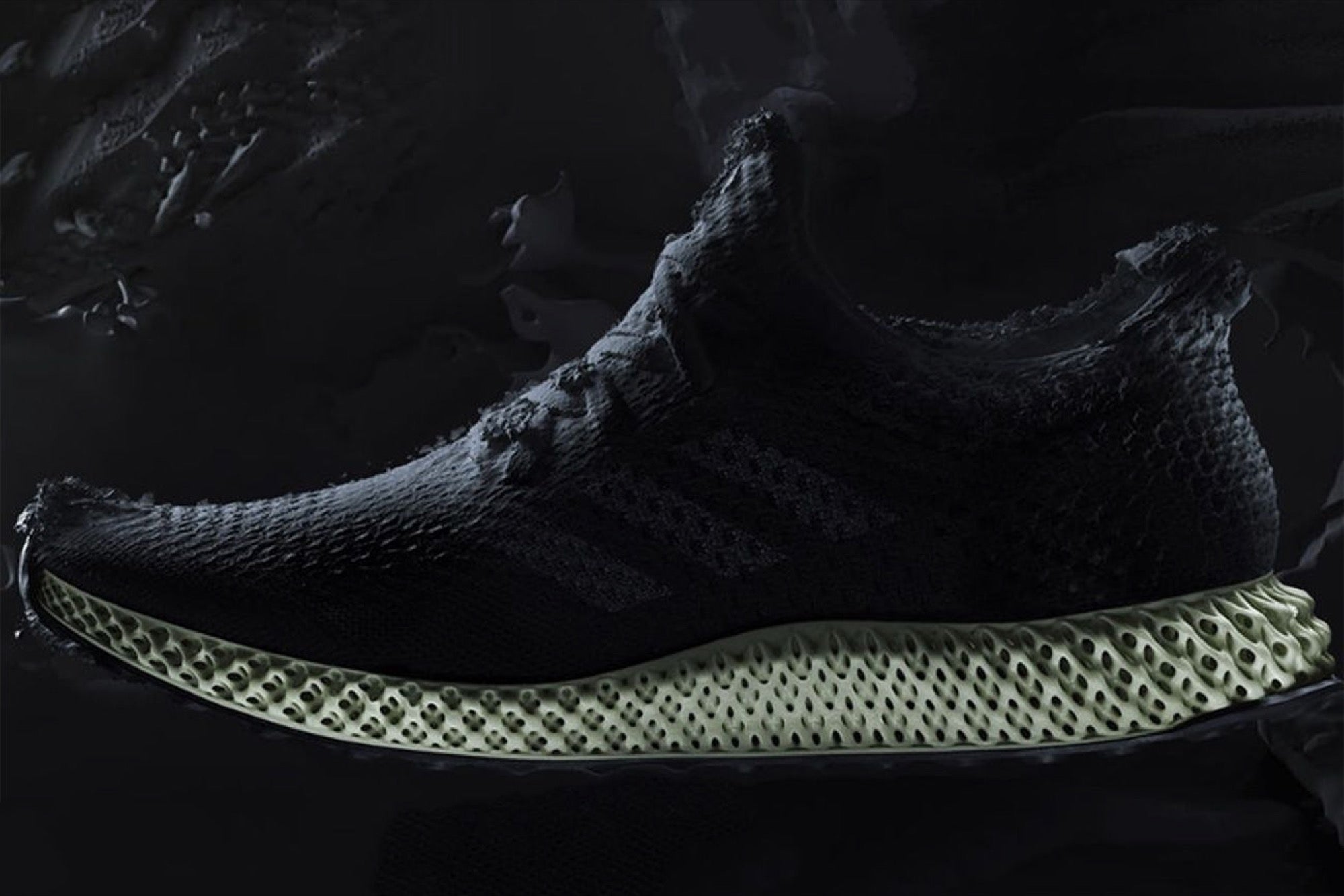Nab an Adidas 3D-Printed Sneaker This Fall The company's first production shoe with a 3D-printed design uses a technology that was originally conceived in the 1980s for rear-projection TVs.
By Tom Brant
This story originally appeared on PCMag

After years of experimenting with 3D-printed footwear, Adidas on Friday announced that its first mass-produced 3D-printed shoe, the Futurecraft 4D, will go on sale this fall.
The shoe's sole is shaped using digital light projection, a technology you might be familiar with if you shopped for a rear-projection TV 20 years ago. Despite rear-projection's demise, the technique is still alive in the 3D printing industry: it projects patterned light onto a liquid photopolymer resin, shaping and hardening it into layers.
To make the Futurecraft 4D's sole, Adidas partnered with the Silicon Valley startup Carbon, which says that its digital light synthesis technique is more efficient than ordinary 3D printing, and thus better-suited to making large quantities of durable goods. According to Texas Instruments, which originally developed the digital light processing concept in the 1980s, it's now used to quickly print everything from prototypes, jewelry casting, custom medical implants and complex automotive and aerospace components.
In Adidas's case, digital light synthesis results in a sole that works just as well as one made in an injection mold and has similar costs and production times. The company plans to sell 5,000 of the Futurecraft 4D this fall, and an additional 10,000 next year. Pricing hasn't been announced yet; Reuters reports that the shoes will sell at an "unspecified premium price," but Adidas plans to lower the cost as the technology develops.
Despite the benefits that 3D printing promises to bring to shoe design and manufacturing, it has been a gradual development process for Adidas and its competitors, at least compared to the consumer tech lifecycle. In 2013, New Balance became the first athletic brand to have a track athlete -- middle distance runner Jack Bolas -- compete in 3D-printed spike plates. But it wasn't until three years later that the company managed to sell a 3D-printed shoe to the public in the form of a limited-edition $400 sneaker.
Adidas, meanwhile, unveiled the Futurecraft 4D's predecessor as a concept shoe in 2015. It used thermoplastic polyurethane instead of resin shaped by digital light projection.









